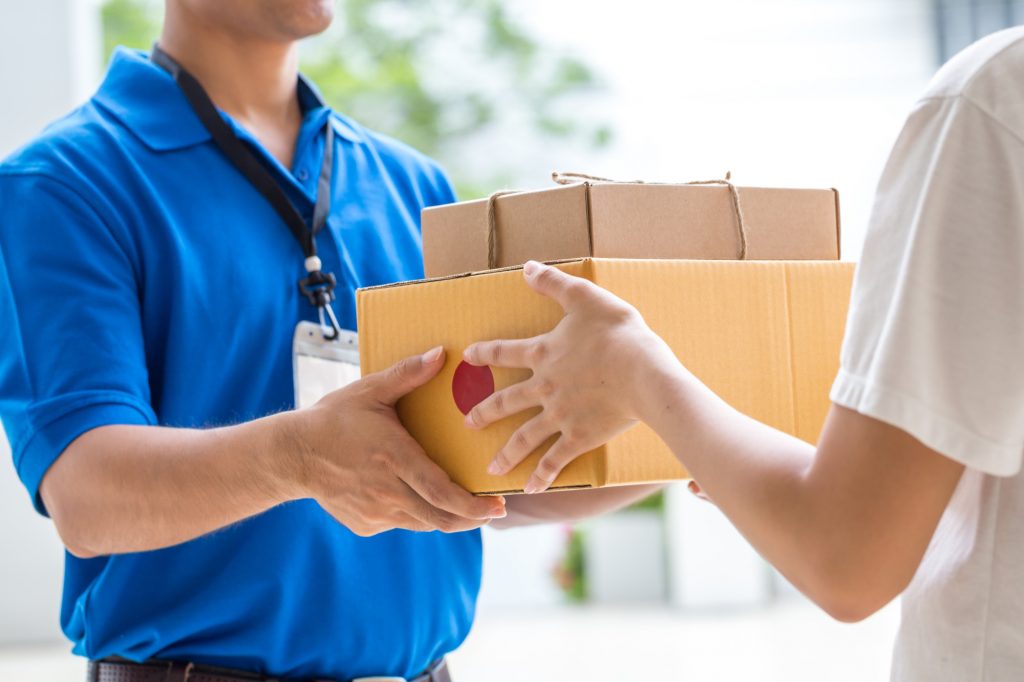When it comes to transporting goods, there’s the straightforward route: your standard courier. Then there’s the more intricate and regulated world of dangerous goods couriers. If you’re in business or logistics, understanding the differences can be crucial for ensuring the safe and compliant transport of your products.
For e-commerce retailers or any company that ships packages, this delineation is important for risk management and customer service quality. Here we unpack the distinctions in an easy-to-digest list format to make sure you’re well-versed in this area of logistics.
1. The Basics of Dangerous Goods
What exactly are dangerous goods? In short, they are substances that can pose a risk to health, safety, property, or the environment when transported. They are categorised into various classes, from explosives and gases to toxic substances and infectious materials.
The transportation of these goods is highly regulated due to the potential hazards they can entail. Understanding the classification of your goods and how they should be handled is fundamental. If your products fall under this umbrella, a standard courier just won’t cut it.
2. The Regulations
Transporting hazardous materials is not a ‘one-size-fits-all’ deal. Different types of dangerous goods come with a slew of regulations from various international and local agencies, such as the International Air Transport Association (IATA) for air transport, or the U.S. Department of Transportation’s (DOT) regulations for ground shipping.
Dangerous goods couriers are experts at navigating these complex compliance issues, ensuring that your shipments meet the necessary regulations for safe transport.
3. Specialised Training and Handling
The staff at dangerous goods courier services undergo rigorous, specialised training to handle hazardous materials. From understanding the various classes and their particular handling requirements to learning the protocols for responding to emergencies, these couriers are equipped for every eventuality. Their vehicles are also purpose-fitted with the appropriate safety equipment and controls, underscoring the level of understanding and infrastructure required to transport these goods.
4. Packaging and Labeling Expertise
Proper packaging and labelling are non-negotiable when it comes to shipping dangerous goods. Incorrect labelling can lead to misidentification and, potentially, accidents.
Dangerous goods couriers offer expert guidance on the packaging design and labelling requirements necessary for compliance with transport regulations. Not only does this keep your shipments safe, but it also streamlines the process, preventing delays or fines due to non-compliance.
5. Documentation and Record-Keeping
The paperwork associated with shipping dangerous goods is extensive. From material safety data sheets (MSDS) to air waybills and additional transport documents, the complexity and importance of accurate record-keeping cannot be overstated.
Dangerous goods couriers are well-versed in handling and filing this documentation, ensuring that everything from customs clearance to liability issues is taken care of efficiently and correctly.
6. The Cost of Safety
High standards of safety and compliance in the transport of dangerous goods often equate to higher costs. The added expenses come from the specialised training, insurance, safety equipment, and compliance programs necessary for these shipments.
Business owners need to be aware of these price differences and consider them as part of their cost of goods sold or as a separate line item in their logistics budget.
7. Accessibility and Coverage
One potential challenge with dangerous goods couriers is accessibility. Their services might not be as widely available as standard courier services. It’s important to ensure that the areas your business serves are covered, as delays or restrictions in reach could impact your operations and customer satisfaction. Investing time in finding a reliable, accessible dangerous goods courier is a critical part of the logistics puzzle.
8. Emergency Planning and Response
In the unlikely event of a spill, leak, or another incident during transport, the response time is crucial. Dangerous goods couriers have detailed emergency response plans in place, which not only focus on the safety of their personnel but also the containment of the hazard and prevention of environmental damage.
These plans are periodically reviewed and modified, keeping the service at the forefront of safety protocols.
9. Customer Service and Communication
When dealing with potentially risky shipments, strong communication with the courier service is essential.
A good dangerous goods courier will keep you in the loop about your shipment’s progress and any issues or delays that may arise. They should also be available to answer any questions and provide support in managing your dangerous goods shipments.
10. Choosing the Right Courier for You
After considering all these factors, how do you go about choosing between a dangerous goods courier and a standard one? The first step is self-awareness. Knowing your products and their potential hazards is the foundation. From there, it’s about conducting thorough research, asking the right questions, and even visiting the facilities. Always opt for a courier company with a proven track record and strong references.
In summary, if your business involves the transport of hazardous materials, taking the time to find a courier that can meet the specific requirements of your goods is not just good practice. It’s crucial for ensuring the safety of all those involved in the transport chain.
Here’s a final piece of advice: Don’t take shortcuts when safety is on the line. Choose wisely and protect your products, your consumers, and your reputation.




